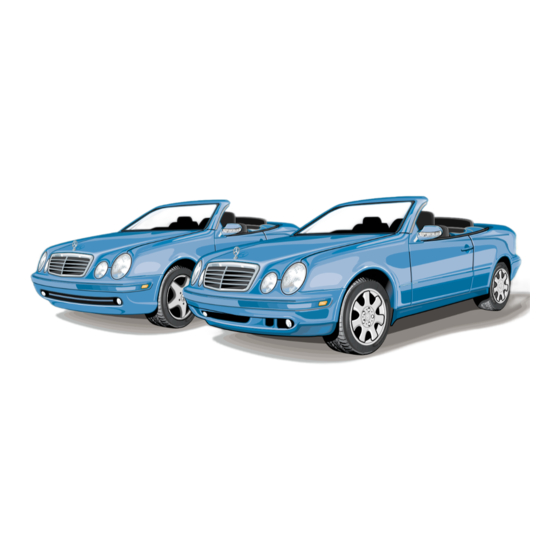
Mercedes-Benz 2000 CLK 320 Operator's Manual
Mercedes-benz 2000 clk-class cabriolet automobile operator's manual
Hide thumbs
Also See for 2000 CLK 320:
- Operator's manual (506 pages) ,
- Service manual (39 pages) ,
- Operator's manual (347 pages)
Table of Contents
Advertisement
Quick Links
Download this manual
See also:
Service Manual
Advertisement
Chapters
Table of Contents
















Need help?
Do you have a question about the 2000 CLK 320 and is the answer not in the manual?
Questions and answers
Can he antenna be removed or bent down to places cover over my 2000 convertible CLK
Yes, the antenna on a 2000 Mercedes-Benz CLK 320 convertible can be removed. It is a non-retractable antenna that should be unscrewed counterclockwise for removal. This allows for placing a cover over the vehicle without obstruction.
This answer is automatically generated